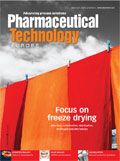News
A round up of some of the news and trends from across the globe.
Figures published by the European Medicines Agency (EMA) relating to centralised procedure activities for human medicines show a significant increase in the number of positive opinions made between 2007 and 2009; however, the majority of approvals are for generic products.

According to the data, the number of positive approvals issued by the EMA has increased year on year — 58 in 2007, 66 in 2008 and 117 in 2009. However, the statistics also show that the number of marketing authorisation applications for new products has decreased, with only 35 applications started in 2009 compared with 41 in 2008 and 59 in 2007.

Generics, on the other hand, have flourished. 2009 saw the initiation of 38 marketing authorisations for generic products, compared with 30 in 2008 and only 6 in 2007. The number of finalised marketing authorisation applications for generics has also increased significantly, from 5 in 2007 and 4 in 2008, to more than 50 in 2009. Interestingly, however, it is a different story for similar biological products (so called 'biosimilars'), which have seen a decrease in the number of both started and finalised applications (started applications: 10, 3 and 1 for 2007, 2008 and 2009, respectively; finalised applications: 5, 6 and 0 for 2007, 2008 and 2009, respectively).
Meanwhile, marketing authorisation applications for orphan products have remained very stable with 11 applications started in 2007, 2008 and 2009. The number of negative opinions issued in each has also remained very stable with 7 in 2007, 7 in 2008 and 8 in 2009.
The data were published on the EMA's website alongside figures relating to January 2010. The agency has said it will be publishing statistics every month to provide ongoing factual information about centralised procedure activities for human medicines. Commentaries and analysis of the figures will be provided in the agency's annual reports.
So what do January 2010's statistics show? The agency has already started 8 marketing authorisation applications and also issued three positive opinions— 2 of which are for an orphan product and a generic product. As of yet, no negative opinions have been given, although 3 applications have been withdrawn prior to opinion.
According to the EMA, the figures complement the Committee for Medicinal Products for Human Use (CHMP) monthly report and will be published on the EMA's website within two weeks following the end of the CHMP meeting.
Source of figures: European Medicines Agency 2010
NEWS Bites
FDA scrutinises imports
The FDA has unveiled a new programme to improve the efficiency of import inspections. The PREDICT information technology system will allow border inspectors to monitor products at the port of entry and to focus inspections on shipments that pose the greatest risk.
Read more at: www.pharmtech.com/fdaimports
EU generic plan
The European Generic medicines Association (EGA) has reiterated its Vision 2015 plan, which is designed to create a globally competitive generic drug industry, increase patient access to affordable quality medicines and ensure sustainable healthcare throughout Europe.
Read more at: www.pharmtech.com/genericplan
Nanotech safety legislation
Two US senators have introduced the Nanotechnology Safety Act of 2010, which would establish a programme to assess the health and safety implications of nanotechnology in everyday products. The legislation would also develop best practices for employing nanotechnology.
Read more at: www.pharmtech.com/nanotechsafety
H1N1 hearing held
A special adviser on pandemic influenza to the WHO's Director General has told a hearing at the Council of Europe that the organisation's response to the influenza (H1N1) pandemic was not improperly influenced by the pharmaceutical industry. The Council, which represents 47 member countries, held the hearing to address concerns over WHO's reaction to the pandemic.
Read more at: www.pharmtech.com/whohearing

Transformations in Drug Development for Cell and Gene Therapies
March 28th 2025As a recognized leader in immunophenotyping for clinical trials, Kevin Lang from PPD discusses how spectral flow cytometry is transforming drug development, particularly in cell and gene therapies like CAR-T. He also dives into his award-winning research, including his 2024 WRIB Poster Award-winning work, and his insights from presenting at AAPS PharmSci360.
Advancing Clinical Trials with Spectral Flow Cytometry: A Conversation with Kevin Lang
March 28th 2025As a recognized leader in immunophenotyping for clinical trials, Kevin Lang from PPD discusses how spectral flow cytometry is transforming drug development, particularly in cell and gene therapies like CAR-T. He also dives into his award-winning research, including his 2024 WRIB Poster Award-winning work, and his insights from presenting at AAPS PharmSci360.
Pharmaceutical Tariffs Are Imminent: How Industry is Bracing for Impact
April 16th 2025On April 14, 2025, the Trump Administration launched a national security-driven investigation into pharmaceuticals, a move that will likely result in tariffs being placed on pharmaceutical drugs, ingredients, and other components that are imported from outside of the United States.